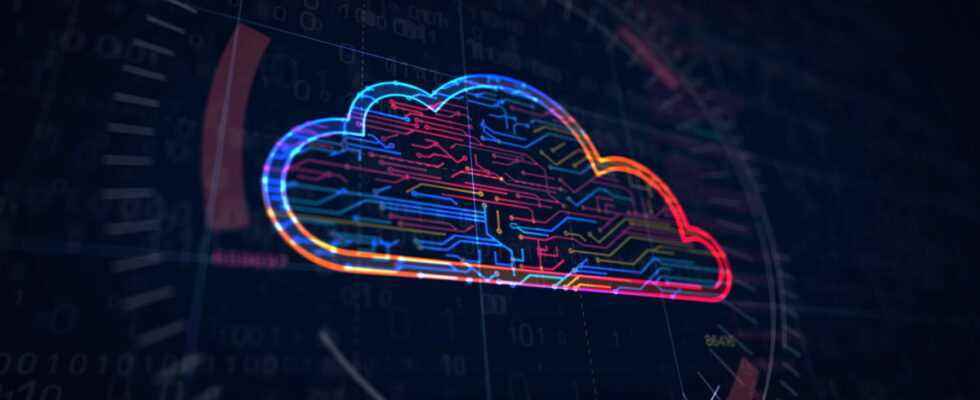Spending on cloud services is poised to hit another key tipping point as enterprise customers spent $18.3 billion on cloud computing and storage infrastructure in the first quarter of 2022, an increase of 17.2% over last year.
This total includes budgets for shared and dedicated infrastructure. A key driver of growth was spending on shared cloud infrastructure, which accounted for $12.5 billion (68%) of the total. This subcategory was also up 15.7% from the first quarter of 2021, according to analyst IDC.
With growing demand for shared cloud spending in particular, IDC expects shared cloud infrastructure spending to exceed non-cloud spending in 2022 for the first time.
Non-cloud spending holds steady
IDC monitors relative spending between cloud and non-cloud infrastructure to measure the evolution of traditional data center compute, storage, and IT infrastructure purchases in public clouds. Amazon Web Services (AWS), Microsoft Azure, Google Cloud and other companies like Digital Ocean.
The outlook looks solid for non-cloud IT infrastructure providers, but not as rosy as for cloud providers. During this quarter, spending on non-cloud infrastructure grew further year over year, reaching $14.8 billion, an increase of 9.8%. This is the fifth consecutive quarter of growth.
IDC doesn’t provide an overview of the revenue split among public cloud providers, but analyst Canalys recently reported that AWS received 33% of the $53.5 billion spent worldwide on cloud infrastructure in Q4 2021, followed by 22% for Azure and 9% for Google Cloud. The other suppliers took the remaining 36%.
Spending on cloud infrastructure has accelerated since the start of the pandemic in March 2020 as companies accelerated their digital transformation. Spending had increased for seven consecutive quarters since the third quarter of 2019, except for a 1.9% year-on-year decline in the second quarter of 2021. The second quarter of 2020 saw the highest year-on-year growth of 38.4%. In Q4 2021, spending on cloud infrastructure grew 13.5% quarter-on-year, to $21.1 billion.
2022 in strong growth
Non-cloud spending remains a huge market and is expected to grow for the full year – albeit at a much slower pace than cloud spending.
For the year 2022, IDC predicts that cloud infrastructure spending will increase by 22% compared to 2021 and will reach $90.2 billion. This is the highest annual growth rate since 2018, the firm notes. Spending on traditional IT infrastructure is expected to rise 1.8% to $60.7 billion.
The larger purchase of cloud-provided infrastructure explains only part of the increase in spending. Other contributing factors include inflation and the gradual recovery of stalled supply chains and logistics networks around the world.
Regionally, IDC expects cloud infrastructure spending to grow 20-25% annually in Asia-Pacific/Japan, China, the United States, and Western Europe. Due to Russia’s attack on Ukraine, speed in Central and Eastern Europe is expected to decrease by 54% in 2022.
$145.2 billion in 2026
The analyst expects spending on cloud computing and storage infrastructure to grow at a compound annual growth rate (CAGR) of 14.5% between 2021 and 2026. He forecasts spending to reach $145.2 billion. dollars in 2026, and that they will then represent 69.7% of total expenditure on computing and storage infrastructures. He expects non-cloud infrastructure spending to grow at a compound annual growth rate of 1.2%, reaching $63.1 billion in 2026.
IDC also examines spending by cloud service providers, digital service providers, communications service providers, and managed service providers, which account for 55.3% of IT infrastructure spending. This group spent $18.3 billion on compute and storage infrastructure in the first quarter of 2022, up 14.5% year-on-year.
Spending by non-service providers rose 12.9% year-over-year in the first quarter of 2022, the strongest growth in 14 quarters.
Spending by IT infrastructure service providers increased 18.7% year-on-year to $89.1 billion in 2022.
Source: ZDNet.com
